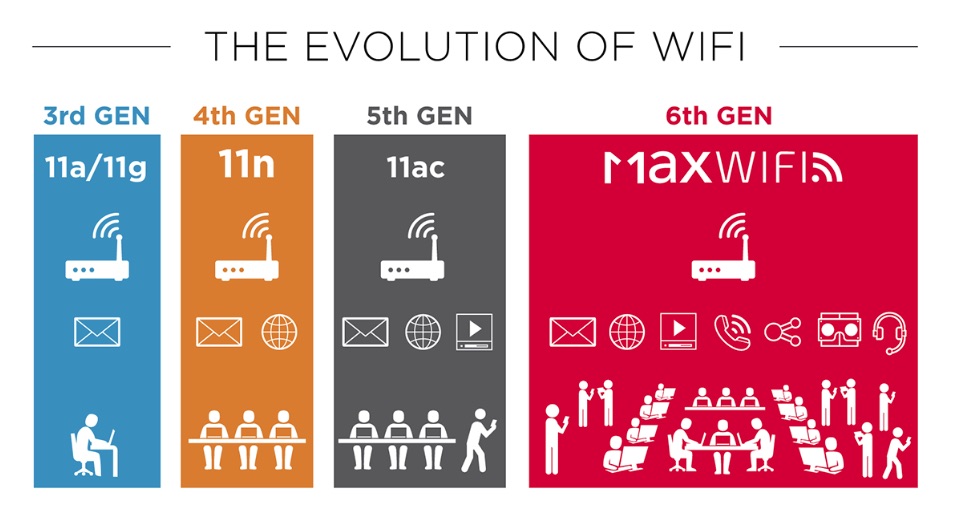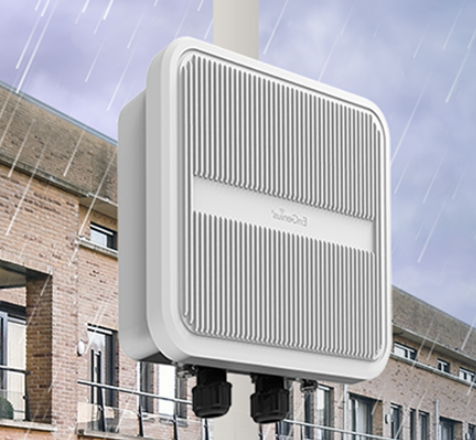
Last week Broadcom became the third major vendor to announce availability of chips supporting the latest evolution of Wi-Fi. Broadcom’s 802.11ax chipset release includes three separate products for residential gateways, enterprise access points, and smartphones.
Broadcom says that their 802.11ax solution will be a massive boost to Wi-Fi quality, speed, and efficiency: Four times faster download, six times faster upload, four times better coverage, and seven times better battery life compared to current Wi-Fi using the 802.11ac standard.
The company has dubbed their solution ‘Max Wi-Fi’ and has launched this website for more details. The 802.11ax standard is the sixth generation of Wi-Fi technology to be released.
OFDMA is key to better Wi-Fi with 802.11ax
Much of the speed boost will come from wider channels (160 MHz), higher-order modulation (1024 QAM), and support for four streams of 802.11ax. But the most important feature of 802.11ax is arguably uplink and downlink OFDMA (scheduling), which will make this new generation of Wi-Fi operate in a manner similar to cellular networks.
The purpose of OFDMA is to do away with on-air packet collisions thus making Wi-Fi data transmissions faster and much more spectrum efficient. The feature means that 802.11ax will serve up much-improved Wi-Fi especially where the density of users and devices is high.
Eying a big residential market
Broadcom’s 802.11ax solution is likely – at least for starters – to be targeting the huge residential market for Wi-Fi-capable CPEs: This year some 180 million Wi-Fi-capable residential gateways will be shipped and that number is projected to grow to 200 million units by 2020. The company says that a four-family home will need connectivity for up to 50 Wi-Fi devices by 2022.
How enterprises & carriers will benefit
Broadcom’s 802.11ax products are packed with features (read the press release here) including power-saving ‘Target Wake Time’ that puts devices to sleep when they’re not exchanging data. Another direct benefit of OFDMA is improved Wi-Fi coverage resulting from an increase in the effective useful radio signal that can be received by Wi-Fi devices.
Wider coverage will likely be a significant boost to outdoor Wi-Fi in cities or on campuses. Coverage and quality improvements with 802.11ax should also make Wi-Fi a lot more attractive to carriers looking to serve consumers with low-cost data. Other current chipset vendors with 802.11ax products include Qualcomm and Quantenna.
The first 802.11ax products are expected to hit the markets in 2018.
/Claus.










